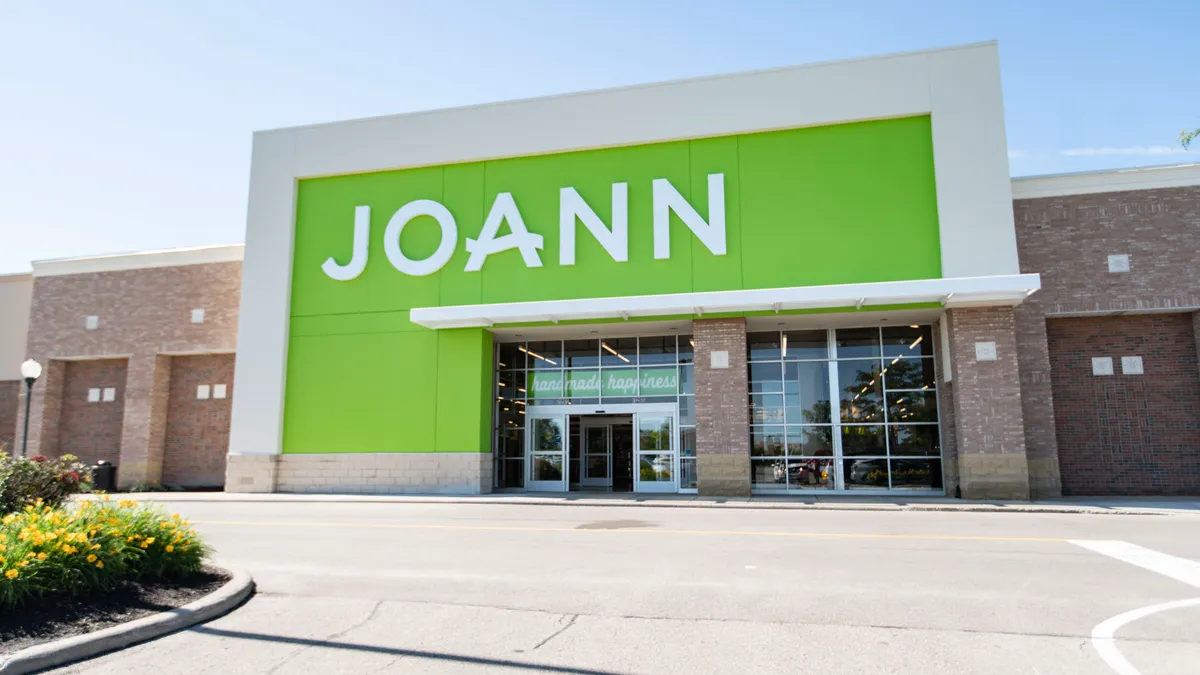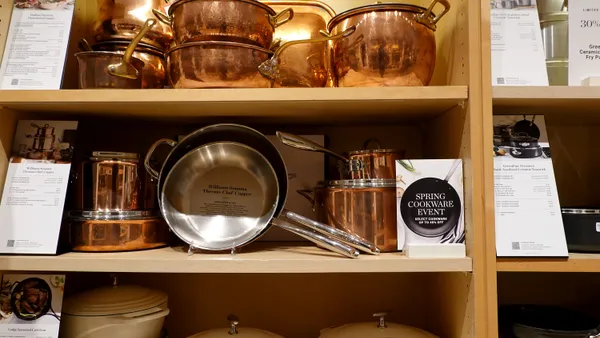Dive Brief:
- Craft retailer Joann is on track to cut $200 million from its supply chain, product and corporate costs, executives told analysts last week.
- Many of Joann’s domestic and overseas suppliers have already agreed to price concessions, CFO Scott Sekella said on the company’s Q2 earnings call. In all, the company expects product cost savings this year to total $60 million.
- The company has also finalized agreements with ocean freight vendors that “will put us in a strong position to over-deliver” on $100 million in supply chain cost savings announced earlier this year, Sekella also noted.
Dive Insight:
After product and transport expenses hit historic levels of inflation, some retailers have been pushing back on vendor costs where they can as commodity prices and freight rates fall.
Joann plans to take negotiations and discussions with vendors into all of its product categories as it works toward its target of $60 million in cuts, according to Sekella.
Those efforts are slowly bearing fruit. While the company’s merchandise margin fell by nearly a percentage point YoY in Q2 because of cost inflation since last year, average product costs have improved from Q1 and management expects those costs to keep falling through the year, Sekella said.
The retailer’s sourcing of freight services is also a huge source of savings this year as rates tumble. In Q2, falling ocean freight costs added 5.8 percentage points to Joann’s gross margin, while decreases in domestic carrier freight rates added another half of a percentage point.
All of this is part of a broader push that Joann management has dubbed the “Focus, Simplify and Grow” initiative, which Sekella said in June was designed to “combat inflationary pressures we have experienced and create financial flexibility during these uncertain times.”
Joann is one of a few retailers to highlight supplier concessions publicly. Perhaps most notable was Walmart, which has worked with its vendors this year to “get costs down more as fast as we possibly can,” Walmart CEO Doug McMillon said in May.
An AlixPartners white paper from earlier this year suggested retailers could negotiate savings of 15% to 25% with suppliers, largely by “clawing back most of the cost increases taken over the past two years.”















